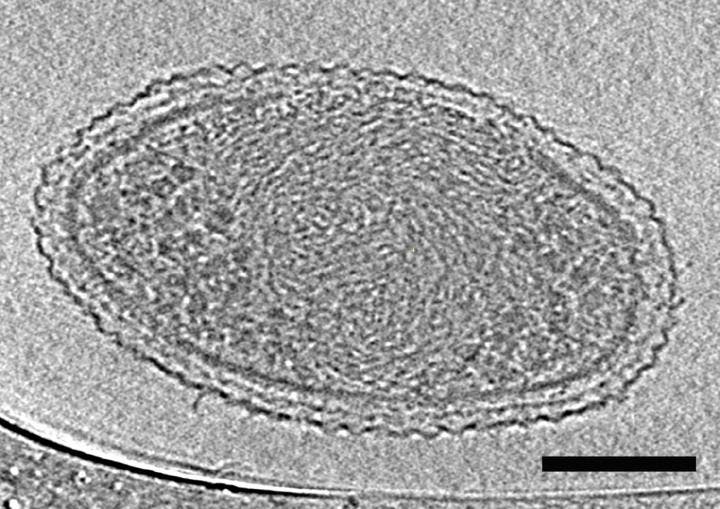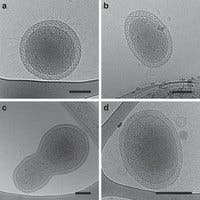US researchers have imaged for the first time ultra-small bacteria, whose existence has been debatable for the past couple of decades. Now, these tiny bacteria have been confirmed after samples coming from groundwater were analyzed with state of the art techniques. Very little is know about these enigmatic creatures, but it’s believed they play an important role in microbial ecosystems, despite their tiny cells harbor limited resources. The cells have an average volume of 0.009 cubic microns (one micron is one millionth of a meter). About 150 of these bacteria could fit inside an Escherichia coli cell and more than 150,000 cells could fit onto the tip of a human hair.
The tiniest life forms

CREDIT: Berkeley Lab
The findings were made by a team of researchers at the U.S. Department of Energy’s Lawrence Berkeley National Laboratory and the University of California, Berkeley. They filtered groundwater collected at Rifle, Colorado through successively smaller filters, down to 0.2 microns. At this size, the water is considered sterile, but in reality this was nothing but sterile. It was teeming with abnormally tiny microbes. The samples were flash frozen to -272 degrees Celsius to make sure these don’t get damaged en route to the lab. At the Berkeley Lab, co-author Birgit Luef and colleagues characterized the cells’ size and internal structure using 2-D and 3-D cryogenic transmission electron microscopy. Since the bacteria was still dividing, the authors trust the tiny life forms were still healthy. Starved cells often become smaller, but this wasn’t the case.
“There isn’t a consensus over how small a free-living organism can be, and what the space optimization strategies may be for a cell at the lower size limit for life. Our research is a significant step in characterizing the size, shape, and internal structure of ultra-small cells,” says Luef.

The bacteria they found are from three microbial phyla that are poorly understood. Their cells have densely packed spirals that are probably DNA, a very small number of ribosomes, hair-like appendages, and a stripped-down metabolism that likely requires them to rely on other bacteria for many of life’s necessities. The appendages, called pili, might be used to attach to other bacteria and share resources.
When their genomes were sequenced, scientists found on average these were about one million base pairs in length. Half of the genes were of unknown function.
Clearly, much work lies ahead. What thing’s for sure – life never ceases to surprise us.
“These newly described ultra-small bacteria are an example of a subset of the microbial life on earth that we know almost nothing about,” says Jill Banfield, a Senior Faculty Scientist in Berkeley Lab’s Earth Sciences Division and a UC Berkeley professor in the departments of Earth and Planetary Science and Environmental Science, Policy and Management.
“They’re enigmatic. These bacteria are detected in many environments and they probably play important roles in microbial communities and ecosystems. But we don’t yet fully understand what these ultra-small bacteria do,” says Banfield.
Findings appeared in Nature Communications.






